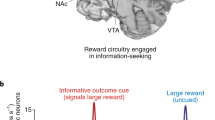Abstract
How can we approach the truth in a society? It may depend on various factors. In this paper, using a well-established truth seeking model, the authors show that the persistent free information flow will bring us to the truth. Here the free information flow is modeled as the environmental random noise that could alter one’s cognition. Without the random noise, the model predicts that the truth can only be captured by the truth seekers who own actively perceptive ability of the truth and their believers, while the other individuals may stick to falsehood. But under the influence of the random noise, the authors strictly prove that even there is only one truth seeker in the group, all individuals will finally approach the truth.
Similar content being viewed by others
References
Castellano C, Fortunato S, and Loreto V, Statistical physics of social dynamics. Rev. Mod. Phys., 2009, 81(2): 591–646.
Proskurnikov A and Tempo R, A tutorial on modeling and analysis of dynamic social networks. part I, Annual Reviews in Control, 2017, 43: 65–79.
DeGroot M, Reaching a consensus. Journal of American Statistical Association, 1974, 69: 118–121.
Friedkin N and Johnsen E, Social influence networks and opinion change. Advances in Group Processes, 1999, 16(1): 1–29.
Deffuant G, Neau D, Amblard F, et al., Mixing beliefs among interacting agents. Adv. Compl. Syst., 2000, 3(01n04): 87–98.
Krause U, A discrete nonlinear and non-automonous model of consensus formation. Eds. by Elaydi S, Ldas G, Popenda J, et al., Communications in Difference Equations, Gordon and Breach Publisher, Amsterdam, 2000, 227–238.
Hegselmann R and Krause U, Opinion dynamics and bounded confidence models. analysis, and simulation, J. Artificial Societies and Social Simulation, 2002, 5(3): 1–33.
Zhang J and Hong Y, Opinion evolution analysis for short-range and long-range Deffuant- Weisbuch models. Physica A: Statistical Mechanics and Its Applications, 2013, 392(21): 5289–5297.
Zhang J and Hong Y, Fluctuation analysis of a long-range opinion dynamics. Proceedings of the 53rd IEEE Conference on Decision and Control, Los Angeles, CA, USA, 2014, 2106–2111.
Hu J and Zheng W X, Emergent collective behaviors on competition networks. Physics Letters A, 2014, 378(26–27): 1787–1796.
Friedkin N, Proskurnikov A, Tempo R, et al., Network science on belief system dynamics under logic constraints. Science, 2016, 354: 321–326.
Jia P, Mirtabatabaei A, Friedkin N, et al., Opinion dynamics and the evolution of social power in influence networks. SIAM Rev., 2015, 57(3): 367–397.
Hegselmann R and Krause U, Truth and cognitive division of labour first steps towards a computer aided social epistemology. J. Artificial Societies and Social Simulation, 2006, 9(3): 1–28.
Malarz K, Truth seekers in opinion dynamics models. International Journal of Modern Physics C, 2006, 17(10): 1521–1524.
Friedkin N, The problem of social control and coordination of complex systems in sociology: A look at the community cleavage problem. Control Systems Magazine, 2015, 35(3): 40–51.
Mäs M, Flache A, and Helbing D, Individualization as driving force of clustering phenomena in humans. PLoS Computational Biology, 2010, 6(10): e1000959.
Grauwin S and Jensen P, Opinion group formation and dynamics: Structures that last from nonlasting entities. Phys. Rev. E, 2012, 85(6): 066113.
Carro A, Toral R, and Miguel M, The role of noise and initial conditions in the asymptotic solution of a bounded confidence. continuous-opinion model, J. Statis. Phys., 2013, 151(1–2): 131–149.
Pineda M, Toral R, and Hernández-García E, The noisy Hegselmann-Krause model for opinion dynamics. Eur. Phys. J. B, 2013, 86(12): 1–10.
Su W, Chen G, and Hong Y, Noise leads to quasi-consensus of Hegselmann-Krause opinion dynamics. Automatica, 2017, 85: 448–454.
Blondel V D, Hendrickx J M, and Tsitsiklis J N, On Krause’s multi-agent consensus model with state-dependent connectivity. IEEE Trans. Autom. Control, 2009, 54(11): 2586–2597.
Chow Y and Teicher H, Probability Theory: Independence, Interchangeability, Martingales, Springer Science & Business Media, 1997.
Author information
Authors and Affiliations
Corresponding author
Additional information
This research was supported by the National Natural Science Foundation of China under Grant No. 11371049 and the Fundamental Research Funds for the Central Universities under Grant No. 2016JBM070.
This paper was recommended for publication by Editor HONG Yiguang.
Rights and permissions
About this article
Cite this article
Su, W., Yu, Y. Free Information Flow Benefits Truth Seeking. J Syst Sci Complex 31, 964–974 (2018). https://doi.org/10.1007/s11424-017-7078-4
Received:
Revised:
Published:
Issue Date:
DOI: https://doi.org/10.1007/s11424-017-7078-4




